Resources
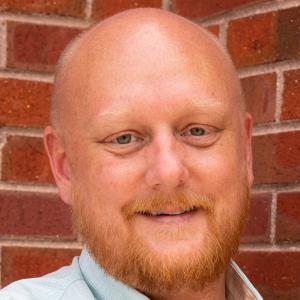
My last first day of class – as a student – was fifteen years ago. But here I am again, somehow back for more.I could make this into one of those “how did I get here?” blogs, and that might be interesting. (The short version is that you should sign up for Wabash’s Breaking the Academic Mold writing workshop if you get the chance). But the how of it all is less interesting than the why. The why of this new first day of class, fifteen years after I thought I was finished, is that I discovered something I really wanted to learn, and I knew I couldn’t teach myself. Since you’ve found your way to a Wabash Center blog post, there’s a good chance you’re pretty great at teaching new things to yourself and to others, and there’s a good chance you’re a really accomplished learner, too. We probably have that in common. I’ve taught myself lots of things over the years, from Italian to citation formats to how to caption videos on the LMS to how to write a tenure dossier. We’ve all learned things without a teacher. But after spending a week in the Minnesota woods with the fantastic teachers Wabash brought to that writing workshop, I knew I needed to learn more, and I knew I couldn’t do it alone. That’s how I ended up here, on my first day of class in an MFA program in nonfiction. It’s my sabbatical year – a precious and rarifying privilege, to be sure—and I’m spending it trying to learn how to be a writer. I’ve written lots of stuff, of course, just like you have, but I want to learn the craft of writing. And for that I need teachers. It’s a wild and unexpected thing, if I’m being honest – the experience of having a teacher. I had forgotten, after a decade with my name on the syllabus, what it’s like to be a student. All the old anxieties showed up like the faces you’d hoped to avoid at your high school reunion. Will I be smart enough? Will I come across as too eager, or too entitled, or too much of something else, or—worst of all—will I come across as not enough? Does she really mean double-spaced with 12-point font? Do I really have to print a copy? What should I wear?But I don’t want to write about the anxieties; I don’t want to give those old faces the satisfaction. I want to write about the way euphoria took me by surprise. After all these years, I had forgotten what it means to show up to learn a thing and be greeted by someone ready to teach you. I had not remembered what it’s like to encounter an expert in a classroom, someone hand-picked and specially trained to help you learn. Even as someone in the education business, I had somehow lost track of the feeling of wanting to learn something and having someone appear, ready to teach it to me.I’m remembering now that having teachers is magical. It’s magical to learn from someone who has spent a lifetime preparing to teach you. It’s magical to place yourself in the care of someone who’s ready to help. It’s magical to have a guide, to meet a mentor, to learn in community. The experience of having a teacher again, after all these years, is reminding me that that’s who I am to my students. I suppose that after so many intro classes and so many seminars, I had slipped into thinking about my role in many other ways than magical. I’ve thought of myself as an institutional intermediary, as an enforcer of policies and offerer of services, as a facilitator or orchestra conductor, and even sometimes as a “sage on stage,” dispensing arcana on demand. But now, back on the other side of things and remembering what it’s like to trust someone with my own formation again, I’m noticing the ways my students have told me what I’ve meant to them. I’m noticing how they describe me—and my colleagues—as transformative and foundational figures in their lives. I have tended to aw-shucks these comments away, reminding students of their roles in their own formation. But now, having teachers again, I think I understand better what my students mean. It’s still just the first day of class. All the frustrating parts of having a teacher are still ahead, and I’m sure there will be plenty of opportunities for realizing and remembering the ways in which I can be a frustrating teacher, too. There will be time for all of that, and more that I can’t anticipate. But for now, I’m reveling—I’m exulting and I’m nearly vibrating with excitement—at the magic of having teachers.
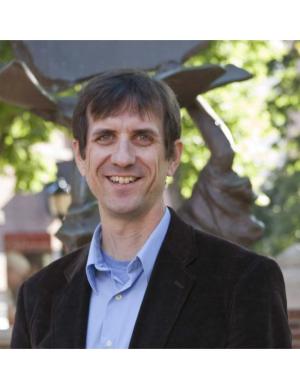
Our only chance to achieve collective happiness comes through extensive conversation punctuated here and there with votes, which will themselves over time, in their imperfections, simply demand of us more talk. ~ Danielle Allen [1] I grew up during the transition from handwritten comments on high school report cards to a pre-populated set of options for teachers to deploy each quarter in a tidy, standardized font. The most frequently deployed comment on my cards: Talks too much in class. Reading Danielle Allen’s Our Declaration, a lively and provocative defense of the centrality of equality in the Declaration of Independence, I have come to appreciate that perhaps I was just a budding democrat, joining the timeless quest to “achieve collective happiness” through “extensive conversation.” I am not sure my teachers saw it through quite the same lofty lens. While the college classroom is no stranger to the phenomena of the student who talks too much—and most often, those students look a lot like me—it seems the more pressing concerns have to do with the stifling (or alternatively, trifling) of conversation. We can’t talk about the election, the protests, the mask mandate, the insurrection, the [fill in the blank with any issue of collective importance] because. . . it is too polarizing, it leads to cancel culture, it offends. . . . Or, in that familiar, euphemistic sleight of hand in every professor’s tool belt: we have too much content to cover, too many lecture slides to get through. We might well ask, are we doing enough to encourage that most fundamental habit of a democratic people: talking with one another? What would it mean to organize our syllabus around the conditions for conversation? This does not mean content drops out. But in this particular moment, I have found that a little content goes a long way—that what many students appreciate most is simply the opportunity to talk, or more accurately, to be heard. I spent the month of June piloting a college-level course for local high school students. Though there were several elements that made this course idiosyncratic—small class size, embedded mentors, self-selected three-week summer intensive—it was a reminder of how our classrooms can promote the habits of the heart de Tocqueville and those who followed him saw as the seed from which formal democratic institutions arise and are sustained. At the start of our second week of class, I invited another student to come in and facilitate a talking circle process, to model the underlying circle logic of restorative practices we had been focusing on. I rarely use circles like this in class, aware of, among other things, the fine line one walks between modeling conversation and group therapy, as well as the problems of scale and trust in classes that tend towards the 25–35 student range rather than the 5–8 range. But in this unique setting, the circle process worked well on many levels including, most importantly, modeling the relationship between speaking and being heard—of having a voice. Critically, I was a participant in the circle, not the circle-keeper (or facilitator). This meant that conversation did not flow, as too often happens in seminars, from professor to student to professor to another student. After finishing the circle, the students requested that we do another one before the end of our three weeks together. This time the students designed the questions, skillfully constructing a set of guiding prompts that moved back and forth between lighter fare (funniest memory from class) and self-evaluation (how will you bring what you learned in this class into your life after class ends?). A consistent refrain in that closing circle was how different this class was than what they have experienced in high school. Here they were co-creators, rather than passive recipients of knowledge. Their views were sought out, heard, and had an impact on the flow and content of the class. The passion with which they critiqued their high school experience gave me pause to wonder about what models students entering our college classrooms have for “talking too much” in class, or, rather, “achieving collective happiness” through “extensive conversation,” that is, for becoming participants in a democracy. It is easy to dismiss the unique features of a college classroom as not applicable to the wider forums where fellow citizens struggle to recognize one another as the “we” in “we, the people.” But I take some hope from the other consistent refrain in our class: these students were hungry for practical advice on how to have conversations with people with whom they disagreed about the issues we are facing as a society. In a class on race, resistance, and reconciliation, what they most wanted was to be heard and to learn better how to hear others—a request for the very thing college seminars would seem to be designed for, the very thing that democracy demands of us. That is hopeful: A generation cognizant that they do not have good models for this, that the hegemonic social media landscape in which their communication skills are being developed are not up to the task. Circles, of course, are not a panacea; they, too, are threatened by the same hyperbole of many trending “solutions” to the ills undermining our democratic experiment. I am under no illusions that the work we do in our classrooms will magically solve the crises of societal and institutional trust, or even that it will hold at bay the forces intent on undermining the conditions that make the work of democratic habit formation central to the academic mission and our classrooms. Nonetheless, I am committed to finding ways our classrooms can “demand of us more talk”—but not just talk by me, the professor. The last thing I want on student evaluations is: Professor talks too much in class. [1] Danielle Allen, Our Declaration: A Reading of the Declaration of Independence in Defense of Equality (New York: Liveright, 2014), 82.

A quilt is an extraordinarily familiar and surprisingly profound item. Owned by many, quilts are remarkable cultural artifacts—a factor not lost on many of our students, who are from a region with a rich history of quilting. In the Fall of 2019, I asked my students to create a community quilt as a class project. The quilt was intended to be an accompaniment to a course that combined philosophy of religion and theology with a focus on human identity within the Christian tradition. Without any prior experience, the students in this course designed, sewed, and assembled a quilt in the space of three months. As a result, the abstract notions of the course took on the texture of rough fabric in their hands. While threading needles proved an enduring challenge, notions of fellowship and of relational identity came together like stitches on quilt-blocks, something readily accessible and extraordinarily familiar. In exploring Christian notions of identity, the course takes Genesis 1 as its point of departure. This text is foundational for Christianity in terms of understanding the human condition and the connection between humanity and divinity. But what does “being created in God’s image” mean to the average twenty-year-old? In a secular university context, I have always found it challenging to connect students to what seem like lofty intellectual and devotional traditions. In the past, I have explored examples of Orthodox iconography as a way of providing a window into these traditions. Yet even an icon-making workshop with opportunities for hands-on experience was not as successful in bridging that gap as I had hoped. It appeared that it is not just doing or making that was important, but the accessibility of the object being constructed as well. A quilt, by contrast, is extraordinarily accessible. While it provides warmth and comfort, its significance is much more than simple utility. Quilts are created according to long-standing traditions, embellished with artistic flourishes, and often given as gifts. Dignity quilts are used to clothe the sick and dying, while memory quilts might incorporate the clothing of those who have passed on. Most importantly, most students from this region own a quilt, which carries with it the memories of their childhood, connections with its maker, and for many, a sense of comfort and home. I encouraged the students to choose a theme for their blocks that included something personal both figuratively—like a story or memory—and literally—like fabric or another material element from their lives. The results were startling. One student focused on the joys of the “local,” using fabrics dyed with local berries and bark from a native birch tree, printed with words from a resident poet. Another student created a more abstract block representing something of the depths opened by grief over a recent family loss. A member of the university football team cut small squares from a range of jerseys to create a mosaic of his player number and, in so doing, indicated the way in which his identity as an athlete brought together so many facets of his experience. A student who came from far away used fabric from clothing that connected her to her life back home. The quilt blocks demonstrated most effectively how history, community, context, and craft are enfolded within identity Where in the past it had been challenging to prompt class discussions, this time students worked with their hands and conversation flowed freely and casually about the dense readings and complex ideas we covered. What is more, as the quilt came together, so did the class community. Sitting around the quilt sandwich became an opportunity for sharing, for connection, and for new understanding. The intricacies of the course materials became accessible because the students were exploring these materials via the metaphor and labour of quilting. This meant they explored their own identity and their connections to each other in parallel to the insights traditionally drawn from Genesis 1. Ironically, in arranging the quilt squares, the students chose sashing that evoked the gold and brown colours of Orthodox icons. In effect, the quilt became a contemporary, lived expression of iconography, one that drew together the identity of the class community into an image that reflected something greater. The completed quilt will not win any state fair competitions, and yet its crooked lines and rough finish speak of how intellectual complexities of identity are made plain in the place where one lives and by the work of one’s hands. This quilt project demonstrated the astonishing layers of connection possible when incorporating local cultural traditions and material practices into the abstract discourses of a third-level philosophy of religion course. It also created an analogue, where students could attempt new skills alongside new theoretical concepts and have the freedom to try and fail at both. As a student remarked, “The freedom to take risks and support one another in our physical explorations was mirrored in the discussions as well; students felt more free to take intellectual risks when discussing the texts because we had each already grown by failing in some way: sewing a quilt square upside down, or making wonky stitching, or struggling with the basics of threading a needle.”
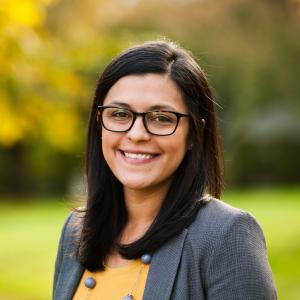
As religious and theological educators, one way to encourage democratic formation among our students is to teach about democracy, especially about the historical relationship between religious institutions and democracy. Another way is to provide opportunities for students to practice democracy. In other words, we might consider how our classrooms and assignments can provide opportunities for students to engage in democratic practices. Both seem important to democratic formation among students. In the United States, one way to describe a civic association, religious institutions having historically been the largest share, is a school of democracy. While this Tocquevillian view has its critics, social scientists claim that participating in civic associations can cultivate a set of civic beliefs, dispositions, and practices that will contribute to a robust civic life. For example, participation in civic associations can generate citizens’ ability to care for one another, care about public issues, and learn how to deliberate about these public issues. They are also thought to generate what Robert Putnam calls “social capital,” which is created when citizens learn the norms of reciprocity, build networks, and build trust. Social capital is needed for citizens to come together to work on common projects, build broader cross-group networks, and join together to hold elected officials accountable. What makes something—an institution, organization, workplace, classroom, or community—democratic? I recently discussed this question with a student as she prepared to facilitate the week’s discussion of Jeffrey Stout’s Blessed are the Organized. As we discussed the text, she compared two organizations she has worked for. Transparency and shared decision-making were features that she felt made her current organization more democratic than the other. Practices of shared authority, shared responsibility, transparency, and accountability are all part of what organizing people democratically looks like. Providing students with examples and theory helps them evaluate the organizations and institutions that they are currently a part of or help lead. It can also cultivate their moral imaginations as they envision reforms or their broader vocation. Further, teaching students about the civic and democratic practices of religious institutions is fundamental to cultivating a moral imagination. Churches played a significant role in the grassroots organizing of the Civil Rights Movement, for example. Our students should not only study the moral reasoning that motivated this civic work but also the organizing practices and the principles that structured these movements. This includes analyzing instances of undemocratic authority and accountability within movements, such as the gendered disparities within certain spheres of the Movement. Contemporary examples are crucial too. C. Melissa Snarr’s All You That Labor is an ethnographic study of the role that religious organizations played within the Living Wage Movement. In addition to being a more contemporary example of broad-based organizing, this study illustrates how religious institutions can help frame the moral language of a public issue. This, too, seems important for helping students develop a moral imagination and prophetic voice. Teaching about democracy, however, is not the only way we can imagine our role as theological and religious studies educators. Rather, our classrooms can also be places where students are able to practice democracy. In my ethnographic study of a public high school in Brooklyn I found several examples and a robust culture of shared authority and shared responsibility among teachers and students. I borrow this way of framing democratic education from Amy Gutman, but it is also deeply related to broader traditions of liberative or critical pedagogies. In my spring course, I incorporated a practice of shared authority and responsibility. Students were divided into small groups of five to six and each was responsible for facilitating the discussion for one week. I met with each student prior to their day of facilitation, and during class I observed. This structure, I believe, is one way to share not only authority with students but also to share responsibility. Students are authorized to share in the responsibility of how the learning unfolds not only with the professor but also with their colleagues. To make these aims more explicit, I asked students to complete a short feedback form after each discussion. One of the questions was: How much more do you feel you understand the content after the discussion? Students could rate on a scale of 1-5 with 1 being “about the same as before” and 5 being “much more than before.” Another question was: How collaborative was the knowledge production and discussion? Students could rate on a scale from 1-5 with 1 being “little to no collaboration” and 5 being “very collaborative.” My goal was to make the aims of the discussion clear: collaborative knowledge production. In this way, I hoped to cultivate a shared responsibility among the group members for understanding, critiquing, and applying the week’s content. While some students incorporated this language and framing into their written feedback, I could have done more to incorporate this as a practice central to the aims of the course. As I reflect on how to revise this practice, I am eager to incorporate other ways to practice shared authority and responsibility within the classroom.

As a theological educator, I’m used to having to make a case for why studying the history of religious movements in the United States is exciting. It’s very common to hear students say at the beginning of a course that history is boring or tedious or not worth their time. “The history of religious movements is in a lot of ways old gossip,” I counter, “Sex, violence, power, persuasion, reversals of fortunes, adventures, and misadventures—who doesn’t want to hear about that?” More often than not, students come around to my way of thinking. While history often gets (erroneously!) categorized as a “boring” field, until recently I took for granted the idea that democracy was inherently interesting to students of religion in the United States. The long, sometimes inspiring, often problematic history of rejecting monarchy and the divine right of kings in favor of democratic self-governance had theological underpinnings from the start, and many historians argue that the United States is so religious and also so creatively religious in part because of its democratic form of governance. I discovered, entirely by accident, that some of my Millennial and Gen Z students—many of whom come from privileged, white, middle class, Protestant families—are bored by democracy. Last year, before a session of my course on American religious history, I overheard a group of students discussing an essay they had been assigned in another course: Václav Havel’s “Forgetting We Are Not God.” In his speech given to an American audience, Havel, the leader of the Czeck Republic’s nonviolent “velvet revolution,” argued that thriving democracies depend on “reverence and gratitude for that which transcends each of us singly and all of us together.” I expected vigorous debate among them. Was Havel’s claim that democracy depended on a sense of the transcendent sound? Did it make sense to give democracy this kind of theological construction? Would Havel’s work hold up in an increasingly diverse citizenry? Was Havel’s democracy good for the world? What were the downsides when it came to public life in the 21st century? What were the benefits? “I’m sorry,” said one student, “but I don’t get this. Democracy, ok, it’s a big deal.” Several others agreed. Two shrugged. They moved on from the topic. Dear reader, I was stunned. I was ready for disagreement and debate. I was not prepared for disinterest. Every professor probably experiences a “kids these days” moment, and this was mine. As a Cold War kid raised during the Reagan era, I took for granted the idea that my students would be interested in evaluating American democracy. Like many others of my generation, I had been inundated with a distinct anti-fascist, anti-communist imagination through film. Indiana Jones punched Nazis in the face. Maverick—undisputed Top American Gun—bested Soviet fliers. Scrappy American kids in Colorado sabotaged communist invaders. The net result for many who came of age in this era could be described as a very flawed pro-democracy imagination. American Cold War blockbusters offered a moral universe that was jingoistic, imperialistic, consumeristic, offered a cartoonish portrait of alternative systems of government, and was often just plain silly. But, especially for young watchers, it was also vibrant. The heroes were cowboys in one way or another, and the villains were vanquished through explosions, punches, and the heroes’ anti-communist, anti-fascist swagger. Children may not have learned much about democracy and its virtues and vices, but most kids watching blockbusters in the 80s knew which side they wanted to be on: the side of cool jets, the Holy Grail, and, of course, democracy. The moment I saw my students shrug in response to Havel’s claims was the moment when I realized that for most of my students, the enthusiasm for the United States as a democratic “city on a hill” that characterized so many films from the Reagan era has been replaced by different imaginative worlds. The students I now teach do not name Nazi-defeating archaeologists or Soviet-busting US Navy fighter pilots as their cultural touchstones or moral influencers. When I ask what pop culture has shaped their understanding of the world, they are more apt to name the magical worlds of Harry Potter or the post-apocalyptic adventures of The Hunger Games. I also learned that theological educators in general, and historians of religious movements in the United States in particular, are especially well-positioned to explore democracy as a generative theological concept. If the last national election taught us anything, it’s that democracy is a contested concept in the United States. A few months ago, Rev. Sen. Raphael Warnock gave a robust 21st century theological argument for democracy on MSNBC News. “I believe in democracy,” he stated, “I believe that democracy is a political enactment of a spiritual idea. This noble and amazing idea that all of us have, within us, a spark of the divine, the imago dei some sense of the image of God and therefore we ought to have a voice in the direction of the country and our destiny within it.” In his soaring rhetoric, Rev. Sen. Warnock gave voice to one of the biggest “big ideas” that has shaped religious life in the United States. For Warnock, democracy was and is an energizing theological concept as well as a form of governance. Indeed, some of the most pivotal figures in American public life—Roger Williams, Frederick Douglass, Susan B. Anthony, Malcolm X, Fannie Lou Hamer, and many, many others—have also voiced strong opinions about whether or not the nation was living up to its democratic ideals.
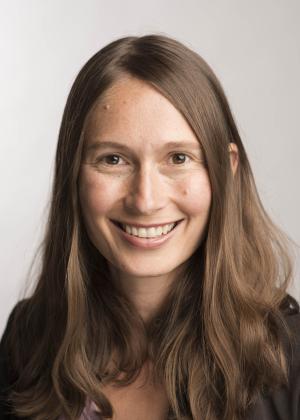
In Interfaith Justice and Peacemaking, an integrative core class which explores the history of tolerance, intolerance, and interfaith efforts in the United States, one of the core texts we use is Eboo Patel’s Out of Many Faiths: Religious Diversity and the American Experience (2018). Central to Patel’s argument is that America needs new, more inclusive civil religious narratives. His book chronicles some of the ways in which Americans have expanded civil religious narratives in the past, however imperfectly, through the invention of the phrase “our Judeo-Christian heritage” in the mid-twentieth century as well as through expanding notions of whiteness. According to Patel, we are at a pivotal juncture in our nation’s history. We need new narratives. Without them, whole swaths of people will continue to feel unwelcome and alienated, and since the health of our civil society depends on civic participation from all of its citizens, our failure to create new, more inclusive stories of who we are could have disastrous consequences. In Out of Many Faiths, Patel focuses on the Muslim-American experience in particular, highlighting ways in which Muslims have been excluded from American society, not unlike what Jews and Catholics experienced at other moments in our history. He also highlights ways in which Muslims are working to expand our civil religious narrative. The somewhat off-color and yet unexpectedly unifying SNL monologue delivered by Aziz Ansari the night after Donald J. Trump was elected president is, according to Patel, one such example. Towards the end of the semester this year, I invited students to highlight other recent examples in the media of artists and performers and making efforts to expand our civil religious narrative. One student presented on Jennifer Lopez’s performance of “This Land is Your Land” at the Biden/Harris inauguration. He argued that Lopez’s performance of this important American folk anthem expands the civil religious narrative by linking a population of people who sometimes feel unwelcome—Hispanics—with a powerful and pervasive American symbol, suggesting that they are. Another student presented on the Black Eyed Peas’ 2009 release of the song “Where is the Love?” featuring black and brown Americans against the backdrop of one of the most prominent of civil religious symbols, the American flag, to the tune of the powerful lyrics calling for unity and love. Just days after these presentations, I attended our university’s commencement in which a Jewish student was asked to deliver the invocation. Given that my university is Jesuit Catholic, this felt like an important moment. I was moved to tears by the eloquence with which she invoked a spirit of blessing upon our community. I’m not sure asking this student to deliver the invocation was an expansion of our civil religious narrative, given that Americans are already generally comfortable with prayers from Christian and Jewish traditions. It did, however, feel like a possible expansion of what it means for us to be Jesuit. Perhaps inviting students of various faiths to lead us in prayer is not a watering down of our Jesuit identity, but rather a truer expression of who we are. Or was it merely token, even exploitative? Did asking her to represent herself in this way cover up all the ways in which we have failed and continue to fail to build a more inclusive community? As part of a faculty reading group on Khyati Joshi’s new book White Christian Privilege (2020), several of us have been discussing the question, how is Regis Catholic? On a micro level, it’s the same question I have been asking my students to think about all semester, how are we American? In other words, what values hold us together? And can those same sets of values be used as a source of inspiration to build a more inclusive and religiously diverse community? My students in Interfaith Justice and Peacemaking struggled to answer this question. When discussing the narratives we tell about who we are as a nation, some identified with Nikki Haley’s speech at the 2020 Republican convention, where she argues that “America is not a racist nation,” or, as she describes, at least not fundamentally so. Other students found Zenobia Warfield’s (2021) story of America, “This is America,” more compelling. In it, Warfield argues that the white supremacist insurrection on the capital wasn’t un-American as many claimed; it was in fact emblematic of who we are as a nation, as “this country was founded on violence and desecration.” This was a difficult, emotionally-laden conversation to facilitate, the kind Khyati Joshi urges educators to engage with, rather than shy away from. For we all have different levels of investment in the systems that uphold religious and racial hierarchies and dismantling these systems requires emotional introspection (209). In the faculty reading group on Joshi’s book we reflected on our recent participation in our university’s commencement ceremony, discussing all the moments when we were asked to participate in both civil religion and the traditions of our Jesuit university. Not all of us were comfortable removing our hats, or standing for the national anthem, and though moved by the invocation performed by our Jewish student, some of us worried she had been used. We do not have consensus about what it means to be a Jesuit university, and thus how we should represent ourselves at such a ceremony. Nor is there consensus about who we are as Americans. If we want to expand our civil religious narrative, how do we go about doing so? Do we need to build consensus first? Does that begin in the classroom? Does it take place in the planning of commencement ceremonies? There is a lot of emotional investment in these questions. Fears will surface when we start to talk about changing the narrative of who we are at a national or collegiate level—fears that reshaping, or expanding, will result in something being lost. I would argue that neither our national identities, nor our religious identities (at the personal or college level), need to be lost in order for us to become more inclusive, but identities do need to change, and there will be growing pains that come with that change. It is my hope that Joshi’s approach, of foregrounding the emotional together with the intellectual, can provide us with useful resources as we navigate these growing pains. Image #1 Jason Leung @ Unsplash Image #2 Lucas Alexander @ Unsplash Image #3 Jordan Crawford @ Unsplash Image #4 Koshu Kunii @ Unsplash
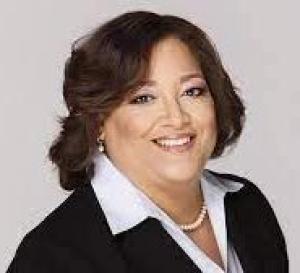
Democracy is the principle of governance marked by every person’s fair and equal treatment. In democratic societies, everyone has the same unfettered access to public goods and shares fairly in public life. Trust undergirds and upholds systems of democracy and these systems disintegrate when the people no longer trust. Importantly, this dependent relationship between democracy and trust exists in the public square and in the seminary classroom. Before I reflect upon democracy and trust in the classroom, I must share a bit about myself. I come to the work of religious and theological education from a career in corporate marketing. My understanding of the teaching and learning experience stems from my years in consumer brand management, during which I developed “muscle memory” in identifying a need, determining how my product uniquely meets that need, and presenting my product in ways that encourage a particular action (usually a purchase). During my time at corporations like the Ford Motor Company, Nabisco, the Fort Howard Paper Company, and The Coca-Cola Company, I was rewarded for my ability to assess my product’s performance knowing market conditions change. As it was with automobiles, cookies, facial tissue, and carbonated beverages, so it is with religious education. As a seminary professor with an eye towards democracy in the classroom, I recognize that classroom environments have shifted in ways that make trust an even more critical part of my pedagogical offerings. Trust must undergird democracy in my classrooms. In what follows, I share my thoughts on some of the actions I take to help build democracy through trust in my classrooms. Trust in the Virtual Classroom This year my fall semester students operated with a heightened sense of anxiety; more of them fixated on the smallest details of the syllabus and their performance. At first, I thought this was a life-stage function as we had many students who matriculated directly from their undergraduate experience. Upon further reflection, I determined that life stage was not the primary driver of this anxious student behavior. This group of students began their seminary journey with no in-person learning; they were 100% online. The lack of in-person interactions brought on by COVID-19 safety protocols (let alone being unable to see or encounter professors or each other outside of the classroom) contributed to students’ anxiety and distrust. I am a Biblical studies professor, currently teaching introductory courses and specialized electives. Students in my introductory class—which is required for the MDiv degree—began online instead of in person. Many of these students applied and were accepted to seminary before the COVID-19 pandemic and had no intention of attending seminary online. My fall 2020 students were all new to the seminary, and I was one of their first seminary professors. Most were new to online learning and they were different when it came to trust in my course. Their levels of trust were lower, and their levels of anxiety were higher than my former students’, who met in-person in traditional formats. Over the Christmas break, I was intentional about modifying my syllabus and reassessing some of my pedagogical practices to account for issues of student trust and anxiety. Consistency is critical when creating trust, allaying anxiety, and nurturing democracy in the classroom. Small details are essential in matters of classroom trust; therefore, I was careful to make sure the templates I used for lecture-discussion looked alike. While it is easier to repurpose material from other presentations, I converted presentation slides, so they matched visually. The title slide from my early “Ancient Near Eastern Context of the Hebrew Bible” presentation looks exactly like the title slide for my latter “Wisdom Literature” presentation. Something is comforting about seeing patterns. I imagined my students thinking, “I recognize this. Dr. Russaw has projected a slide that resonates with last week’s information presentation. This experience is not something new I have to manage in my day. I can relax and learn.” Secondly, I structured class sessions in the same way each week. Each session began with a centering moment and ended with “good words” of encouragement. My teaching assistant took responsibility for each week’s centering moment, and arranging for volunteers for the closing words. These consistent rituals did a couple of things. Students knew the centering moment signaled the official start of class. It was not uncommon to hear deep sighs at the end of the centering moment. It was as if students were saying, “Okay. I am in a (virtual) space where I feel comfortable. I can relax a bit and lean into the next couple of hours of learning.” Giving students a way to participate through volunteering to offer closing words helped build democracy because all students had an equal opportunity to participate, or not. We all, professors and students, live in a time of great uncertainty, and that uncertainty makes for anxiousness and distrust in the classroom. I hope that by attending to small actions we can take in our classrooms, our students will learn to trust and will be able to flourish in their learning.

It seems to me that, in order to create truly democratic and equitable classrooms, we need to first think about how to create classroom “communities”—something that, as Anna Lännström has noted previously, is especially hard to build right now. Communities that create space for all people and perspectives don’t just happen randomly or necessarily; they require a great deal of intention and attention. Rules, norms, guidelines, or whatever you want to call them can foster a democratic learning environment in which students feel like they can bring their full selves, ask questions, share misconceptions, try out new ideas, debate, create space for others, plan for action, and grow. I try to build community in lots of different ways in my classes, but an essential activity early on always involves the co-creation of a set of community norms that we all commit to upholding for the semester. As an initial homework assignment, to prime the community building, I have students fill out a “getting to know you” questionnaire I have fine-tuned over the years. One question, near the end, prompts students to fill in the blank: “As a learner, I do best when my peers….” Then, in class, I ask students to share what they wrote. (In-person, in the past, I would use an anonymous polling software like PollEverywhere. On Zoom, I just have students type into the chat box) As we review and discuss their responses, we all start to get a sense of what kind of support students would appreciate from each other. I then put students in groups (breakout rooms in Zoom) of about 3-5 and ask them to brainstorm answers to the following: What would it look like if we were to bring our “best selves” to class every day? What standards do we want to uphold? I tell students to keep in mind the responses they all shared to the “As a learner, I do best when my peers….” prompt. Each group types their ideas for norms directly into a shared Google Doc (no log-in required) and, once they are finished, we go through each proposed norm, one by one, making sure we all understand what it means, we all know how it would manifest, and we all can “live with it.” I usually lead this exercise on the second day of class; sometimes it flows into the third. We discuss for as long as it takes to reach agreement. Along the way, I actively encourage discussion and even dissent; right from the beginning, students know it is okay to critique and disagree. Generating community norms together not only starts the very process of building a democratic classroom community, but it also provides many “teachable moments.” For instance, students will often propose a norm like “respect each other.” But what the heck does this mean? I ask them to clarify: how do you understand this word, “respect,” and how do you know when someone is “respecting” you—or vice versa? A culture of politeness and “civility” reign at our institution, so I am particularly invested in ensuring that any expectations of “respect” don’t serve to stifle or silence. Many typical standards, like “respect,” are so vague or generic as to be useless and all too often end up centering the dominant groups or perspectives; this in-class activity allows us the space for this discussion. It also gives me a chance to suggest some norms of my own, since I’m a member of the classroom community too. I will usually propose some from AORTA’s Anti-Oppressive Facilitation Guide or “Respect Differences? Challenging the Common Guidelines in Social Justice Education,” such as “Strive for intellectual humility. Be willing to grapple with challenging ideas” and “Identify where your learning edge is and push it.” The community norms that the students and I co-create then stay with us over the course of the semester; this is not a “one and done” activity. We revisit them regularly. I project the norms at the beginning of different class periods. I give students a chance to review them and ask if we need to make any amendments. I check in every so often to find out how we think we are doing with the norms. The community norms guide all of our time together. (They also make it much, much easier to address any problems that might emerge in class, because I can simply refer back to the norms that we all agreed to.) At the end of every semester, in their final exams or their final course evaluations, students routinely remark on the “community” feel in my courses, with appreciative comments such as, “The class really seemed like a community, which made it easy to share and participate, and it was clear everyone liked the class and wanted to be there.” Without such a community in place, the difficult work of teaching for, about, and toward democracy would, I fear, be a non-starter.
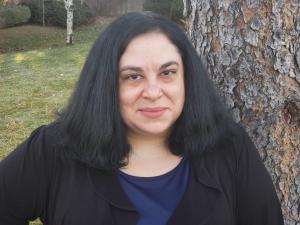
In 1887, British politician Lord Acton wrote the well-known phrase, “Power tends to corrupt, and absolute power corrupts absolutely.” Not as well-known is the context in which Lord Acton penned these words. They were written to the Archbishop of the Church of England, Mandell Creighton, who decried what he saw as overly harsh criticism of men in authority, namely, corrupt and abusive popes. In the same letter, Acton remarked, “I cannot accept your canon that we are to judge Pope and King unlike other men, with a favourable presumption that they did no wrong. If there is any presumption it is the other way against holders of power...there is no worse heresy than that the office sanctifies the holder of it.”[1] Christianity and power have long been intertwined in problematic ways, but does this mean that religious leaders and people of faith working for justice and peace should avoid power altogether? Is power inherently bad? In my Community Organizing course for theology students, our discussions interrogate these questions and contextualize them to current realities. Drawn from one of the class texts, our working definition of community organizing is “to mobilize disenfranchised people to advocate on their own behalf in relationship to some power structure in order to achieve needed changes.”[2] This important work necessitates the amassing of power, not for consolidation with the few but for distribution among the many, so that power relations are transformed and power itself becomes a shared entity. In other words, structures that have consolidated power such that individuals residing within them are “sanctified” by the nature of their office must be held to account by the collective power of those impacted by the sanctified’s actions. Ultimately, power is not inherently good or bad; but it has the potential to be either or both depending on who has it and how it is shared (or hoarded, as the case may be). Organizers—and ministry leaders—need to learn not only how to share power with others, but also how to help others recognize that they have power in the first place. In the COVID-19 era in which instruction has moved online, engaging in activities that help students practice power sharing requires creativity, patience, and a willingness to yield some of my own power as the instructor. The course is delivered asynchronously for the most part, but there are three seventy-five-minute synchronous Zoom sessions built into the design. I have utilized the majority of this time for the practice of key organizing activities designed to cultivate capacities for power sharing. In our first session, I facilitated a consensus decision making process whereby the students discussed in small groups, and then reported out to the whole class, their proposals and reasonings for how they would prefer to be grouped in responding to weekly discussion questions. (It is a large class, so there are many options for how they might be grouped for weekly assignments). Consensus was built around one option, and the group agreed to experiment with their decision until the next Zoom session when I would check in with everyone to see if any change was desired. At the next session, students also split into pairs and practiced relational meetings, a foundational tool in community organizing with a purpose of building shared power through identifying mutual interests. Through these activities, students cultivated awareness of their individual power, yet were challenged to forge connections with others to make shared decisions and listen for the purpose of understanding. These students, who will likely hold positional power as clergy or nonprofit directors, attained new understandings and praxes of creating collective power, moving beyond seeing power simply as a force to be cautiously kept behind a fence (as in a pastoral care conversation, for example) to embodying it as an active, dynamic energy that—with intentionality and humility—can transform individuals and dismantle unjust systems. By introducing students to such constructions and practices around power, and committing myself to practicing a pedagogy of power sharing in the virtual classroom (both as I’ve described and in other ways), alternatives to “absolute power corrupt[ing] absolutely” might instead form leaders who empower self and others relationally and collaboratively. There is no organizing—or leadership, for that matter—without community. Given what our country has witnessed over the past four years with a Trump presidency, such alternatives are needed now more than ever in religious and secular spheres alike so that democracy might be realized more full [1] Lord Acton, “Letter to Archbishop Mandell Creighton,” April 5, 1887, https://history.hanover.edu/courses/excerpts/165acton.html. [2] Loretta Pyles, Progressive Community Organizing: Reflective Practice in a Globalizing World, 2nd ed. (New York: Routledge, 2014), 10.